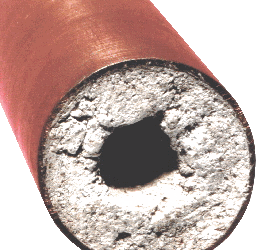Hand-drying every cup and plate after the dishwashing machine’s done can be discouraging and lengthy. However prior to you require a repair work, some standard dishwashing machine upkeep and suggestions can assist you get drier meals. From incorrect filling to an absence of rinse help, here’s why your dishwashing machine leaves meals damp and what you can do about it.
The Leading 6 Factors Your Dishwashing Machine Leaves Meals Wet
Why does my dishwashing machine moist my meals? It ends up most responses aren’t extremely made complex. While breakdowns are constantly possible, often the easiest modifications to your day-to-day practices can make the distinction when your dishwashing machine leaves meals damp.
# 1. Meals Aren’t Packed Appropriately
Among the most typical factors a dishwashing machine leaves meals damp is incorrect loading. Putting the incorrect products in each rack or overwhelming with a lot of unclean meals can restrict air flow, leaving products damp. In addition, a dishwashing machine does not tidy well if overwhelming blocks water and cleaning agent from reaching each product.
Follow these rack-by-rack loading suggestions for drier meals after each wash cycle:
- Upper rack: Reserve this rack for glasses, mugs, and little bowls. Put them upside down and at an angle for much better rinsing and drying.
- Bottom rack: Developed for supper plates, serving plates and pots and pans, constantly put products dealing with inward or upside down for much better access to air. Ensure there’s appropriate area in between each product by putting one meal in each slot.
- Flatware basket: Avoid nesting and boost air flow by rotating forks, spoons, and knives beside each other.

# 2. Dumping Dispense of Order
The order in which you discharge meals can make it appear as if the dishwashing machine does not dry them adequately. Dumping the leading rack prior to the bottom enables any remaining water to leak onto dry meals listed below, making them appear damp. Constantly discharge the bottom rack prior to the leading so any leaking water from above falls on an empty rack.
# 3. Plastic Products Not Drying
Wondering how to enhance dishwashing machine drying? Adhere to hand-washing plastic products. Plastic does not keep heat along with other products, like glass or ceramic. This leads to slower evaporation of water beads, leaving plastic products damp while others are dry.
# 4. Heated Dry Not Allowed
Some dishwashing machines utilize heated air or other drying functions to dry meals quicker after they’re cleaned. Nevertheless, these functions need to be made it possible for prior to a wash cycle starts to start at the proper time. If you believe your dishwashing machine leaves meals damp, ensure any drying functions are picked prior to beginning a wash cycle.
The following choices can develop drier meals:
- Heated Dry: Blows hot air on meals at the end of a wash cycle.
- Sterilize: Raises the temperature level of heated air to eliminate bacteria and dry meals quicker.
- Night Dry: Drying fans switch on periodically throughout the night to eliminate remaining condensation.
Not all modern-day dishwashing machines utilize a standard heating coil to dry meals though. Some brand names like Bosch and Asko utilize a various system completely, which’s where our next pointer is available in …

# 5. Not Utilizing Dishwashing Machine Rinse Help
Among the very best methods to enhance dishwashing machine drying efficiency is to include rinse help. Though rinse help is typically marketed as promoting shine, it’s really a crucial dishwashing machine drying representative. It separates the structure of water beads, allowing them to run meals and glassware more quickly.
In reality, some brand names like those noted above that do not utilize a heating coil really need rinse help in order to dry meals. These designs utilize warm water and sheeting actions to dry surface areas rather. So no matter which design you own, utilize a rinse help with each wash cycle to eliminate any remaining water.
# 6. Broken Dishwashing Machine Element
If these factors do not describe why your dishwashing machine leaves meals damp then it’s possible a damaged part is accountable. A few of the most typical breakdowns that lead to a dishwashing machine not drying properly consist of:
- Faulty Vent Fan Motor: Some vent systems make use of a fan that moves wet air external. If the fan breakdowns, meals will not dry effectively.
- Stopped Working Heating Component: A heating component can stress out or breakdown gradually, leaving meals damp at the end of a wash cycle.
We advise that an expert dishwashing machine service evaluate these concerns and make any needed repair work or replacements. Call Cody’s Home appliance Repair work for quick and reputable service.




